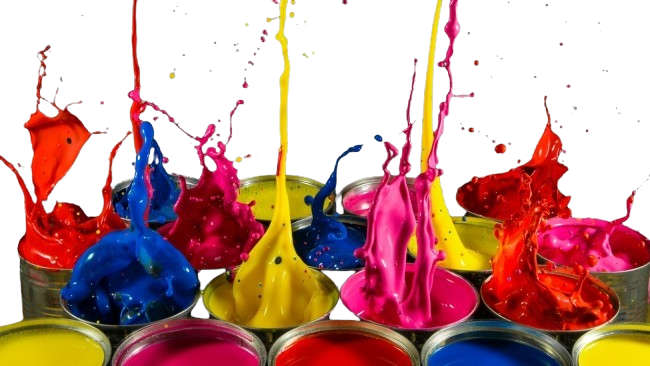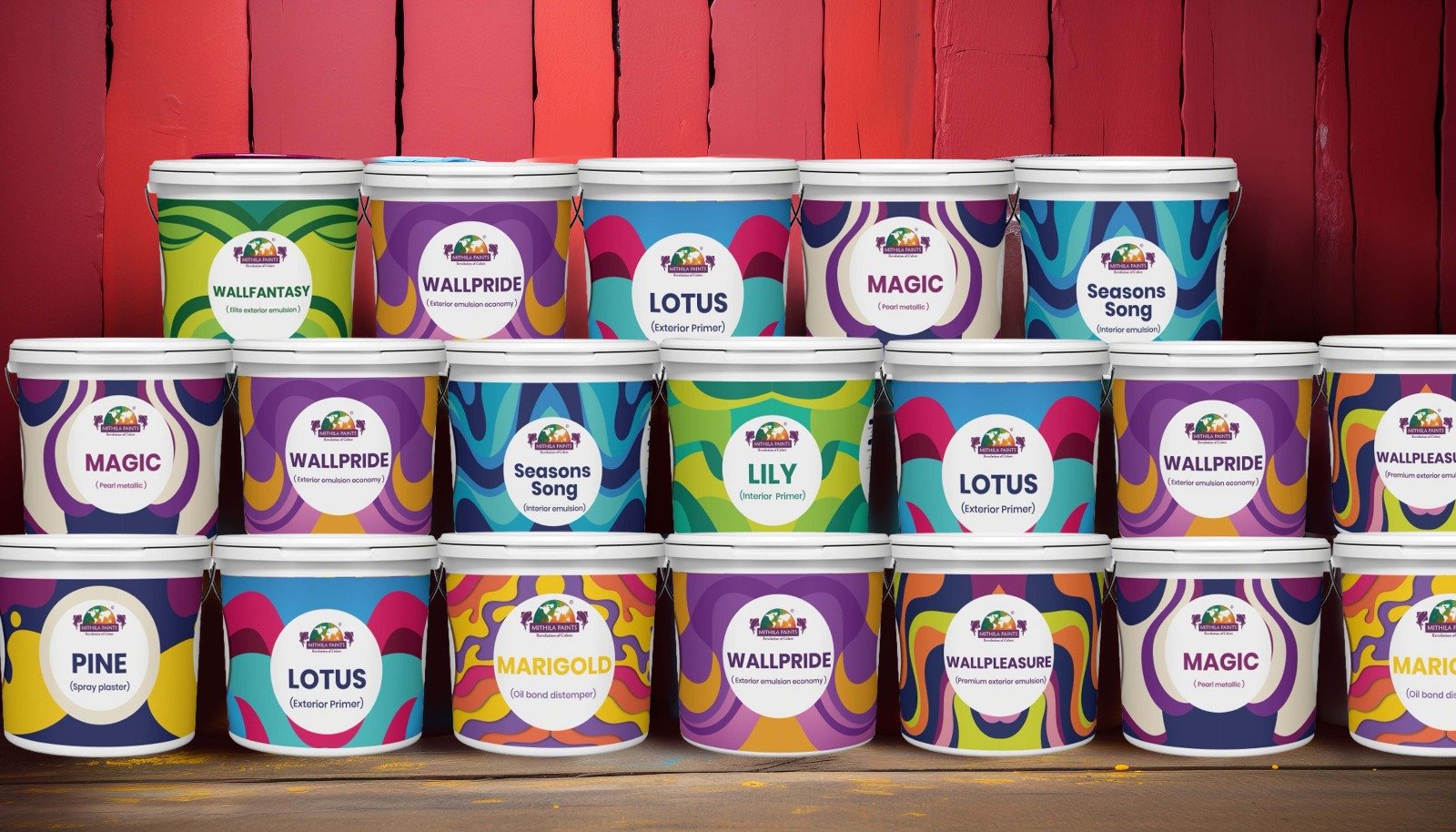Introduction to Mithila Paint Brands in India
Mithila painting, also known as Madhubani art, is a traditional art form originating from the Mithila region of Bihar, India. This unique artistic expression has roots that trace back to ancient times, embodying a cultural legacy that reflects the social, religious, and mythological narratives of the local populace. Historically, Mithila paintings were created by women as a part of rituals and celebrations within their households, often adorning the walls of homes to mark significant events like weddings and festivals.
The significance of Mithila painting transcends mere aesthetics; it serves as a visual storytelling medium that preserves folklore and daily life scenarios. Artists utilize vibrant colors derived from natural sources, such as plants and minerals, to represent themes related to nature, deities, and rural life. The intricate patterns and detailing seen in these paintings are not only captivating but also steeped in cultural symbolism, often reflecting the philosophy and beliefs of the Mithila community.
Mithila art is characterized by its bold lines, bright colors, and recurring motifs, which include elements of nature, geometric shapes, and figures from Hindu mythology. Common themes in these paintings portray scenes from epics such as the Ramayana and Mahabharata, depicting gods, goddesses, and animal figures. Over the years, Mithila painting has evolved from its traditional forms to include contemporary subjects, while still maintaining its original charm. This evolution has not only helped in preserving this rich cultural heritage but has also made Mithila art accessible to a broader audience, fostering appreciation for its distinctive narrative style and craftsmanship.

The Cultural Significance of Mithila Paints
Mithila paintings, also known as Madhubani art, hold profound cultural importance within the Mithila community in India. Traditionally crafted by women, these exquisite artworks not only reflect individual creativity but also embody a collective cultural legacy that has been preserved and passed down through generations. The art form serves as a vital link to the community’s heritage, with each painting telling a unique story that intertwines personal and collective narratives.
The process of creating Mithila paintings is deeply embedded in the cultural practices of the region. These artworks are often linked to significant life events such as weddings, childbirth, and festivals, making them an integral part of social and religious customs. For example, during marriages, homes are adorned with elaborate paintings that depict traditional motifs, symbolizing fertility, prosperity, and the blessings of deities. Such practices reinforce the importance of Mithila art in marking milestones and celebrating life’s transitions, thereby fostering a sense of unity among community members.
Furthermore, Mithila paintings are rich in thematic diversity, encompassing various aspects of daily life, nature, mythology, and spirituality. The vibrant colors and intricate patterns not only captivate the viewer but also serve as a medium for storytelling, encapsulating the beliefs and aspirations of the artists. This act of storytelling through art allows for the preservation of the community’s folklore and traditions, ensuring that myths, legends, and historical events are not lost to time.
In essence, Mithila paintings transcend mere artistic expression; they embody the identity, beliefs, and values of the Mithila community. This cultural legacy continues to thrive, with innovative adaptations emerging while still upholding the traditional techniques and themes that define this distinctive artistic form.
Overview of Popular Mithila Paint Brands in India
Mithila painting, a traditional art form originating from the Mithila region of Bihar, India, has gained considerable recognition owing to its intricate designs and vibrant colors. Several brands have emerged that not only promote this cultural heritage but also provide artisans with a platform for their craftsmanship. Among these, Maithil Art is one of the most prominent names. Established with a mission to preserve and promote Mithila artwork, the brand focuses on sustainable practices and empowers local artists through fair trade initiatives. Their products range from paintings to home decor items, each piece reflecting the rich culture of Mithila.
Another noteworthy brand is Mithila Art Gallery, which serves as both an online and offline platform for showcasing Mithila art. The gallery is dedicated to preserving the authenticity of this art form while also providing artists with opportunities to reach a larger audience. Their collections are curated to highlight the diversity within Mithila paintings, offering something unique for both art enthusiasts and collectors alike.
Sanjhi Art is another notable mention that stands out in the Mithila painting landscape. With a commitment to innovation, Sanjhi Art combines traditional techniques with contemporary themes, making their artwork appealing to a younger demographic. Their collaborations with various artists have resulted in a blend of styles, which has significantly enriched the Mithila painting narrative.
Finally, we cannot overlook the contributions of smaller, artisanal brands that contribute to the Mithila painting scene. These brands often emphasize authenticity and craftsmanship, providing personalized experiences for their customers. By supporting local artisans, they are essential in keeping the Mithila arts alive and relevant in today’s market.

Materials and Techniques Used in Mithila Painting
Mithila painting, a renowned art form from the Mithila region of Bihar, India, is distinguished by its vibrant colors and intricate designs. The materials and techniques employed in this unique art form are deeply rooted in tradition and utilize natural resources, which enhance the authenticity of the artwork. Artists predominantly use natural pigments derived from plants, minerals, and other organic substances to achieve a rich palette. For instance, colors like red can be obtained from the madder root, while indigo is used for blue shades. These natural pigments are not only environmentally friendly but also contribute to the cultural significance of Mithila paintings.
The fibers used as canvas are equally important in the creation of these artworks. Traditionally, artists paint on handmade paper, cloth, or even dried leaves, which allows the intricate designs to stand out. This use of natural fibers adds texture and depth to the paintings, making them visually striking. The artists typically utilize simple, traditional tools, such as brushes made from animal hair or even twigs, which enables them to execute delicate and fine lines essential for detailed designs.
In terms of technique, Mithila paintings are characterized by a distinctive style known for its repetitive patterns and bold outlines. Artists often employ a process of outlining the primary motifs first, followed by filling in the colors with care. This method not only accentuates the imagery but also reflects the meticulous training and skill required by the artists. Each piece of Mithila artwork is a labor of love, demanding not just artistic talent but also a profound understanding of cultural narratives and symbolism. The combination of traditional materials and techniques creates an extraordinary legacy that has been passed down through generations, thus preserving the rich cultural heritage of Mithila painting.

Impact of Mithila Paint Brands on Local Artisans
Mithila paint brands have established a significant presence in India, playing a pivotal role in uplifting local artisans and preserving the region’s rich cultural heritage. These brands not only create a marketplace for Mithila art but also facilitate sustainable economic opportunities for the artisans involved. By providing consistent demand for their artwork, they empower these skilled artists to achieve financial stability, which is often elusive in traditional crafts.
Employment opportunities generated by Mithila paint brands are vital for families in the community. Many artisans, often women, are able to work from home, allowing them to balance job responsibilities with household duties. This flexibility helps to enhance their status within the community and encourages greater participation in the workforce. Furthermore, the brands often focus on fair trade practices, ensuring that artisans receive equitable compensation for their work. This approach not only supports their livelihoods but also champions ethical consumption, fostering a more informed customer base that values cultural authenticity and craftsmanship.
In addition to financial benefits, many Mithila paint brands initiate programs aimed at skill development and capacity building. Workshops, training sessions, and mentorship programmes help artists refine their techniques and experiment with modern themes, thereby enhancing their artistic versatility. Some brands go a step further by facilitating exposure to national and international markets through collaborations and exhibitions. Such initiatives not only showcase the art form widely but also attract attention to the diversity and richness of Mithila culture.
Through these efforts, Mithila paint brands are significantly contributing to the economic wellbeing of local artisans. They encourage a resurgence of interest in traditional crafts, ensuring that the vibrant legacy of Mithila painting continues to flourish in contemporary society. The ongoing support from these brands is indispensable for the survival and growth of this art form, ultimately enriching both the cultural landscape and the lives of the artisans who create it.
Challenges Faced by Mithila Paint Brands
Mithila art, renowned for its intricate styles and vibrant colors, is not merely a form of artistic expression but also a crucial component of India’s cultural heritage. However, Mithila paint brands grapple with a multitude of challenges that threaten their sustainability and relevance in the contemporary market. One of the primary challenges stems from intense competition with machine-made art. With advancements in technology, mass-produced art has become increasingly accessible, often available at lower prices than handmade Mithila paintings. This shift poses a significant risk to artisans who rely on the authenticity and unique appeal of their handcrafted products to attract customers.
Preserving traditional techniques represents another considerable obstacle. Many young artists are moving away from traditional methods, opting instead for modern styles or digital mediums, which can dilute the essence of Mithila art. As a result, brands are finding it challenging to balance authenticity with innovation. The fear of losing traditional artistry is profound, as each painting often carries stories and cultural significance that might not be replicated if the techniques fade into obscurity.
Market access for artisans remains a pressing concern as well. Many Mithila artists work in rural areas with limited exposure to broader markets. While efforts have been made to promote these art forms, obstacles like inadequate infrastructure and lack of marketing know-how often hinder their reach. Furthermore, globalization impacts the art form by introducing various advantages as well as challenges where mass consumption sometimes overshadows local craftsmanship. Maintaining the authenticity and cultural relevance of Mithila art in a globalized marketplace is an ongoing struggle that brands must navigate carefully.
Contemporary Trends in Mithila Painting
Mithila painting, with its rich cultural heritage, has undergone a significant evolution in recent years, particularly in the realm of contemporary art. Traditional artists from the Mithila region of Bihar have seamlessly integrated modern trends into their artistic expressions while preserving the fundamental aesthetics that define this unique art form. This fusion has not only rejuvenated Mithila painting but also made it accessible to a broader audience.
One notable trend is the collaboration between Mithila artists and contemporary designers. These partnerships have resulted in innovative projects that incorporate Mithila art into fashion, textiles, and home décor. By reimagining traditional motifs and techniques, artists are creating unique products that appeal to modern sensibilities. For instance, the incorporation of Mithila designs into clothing lines and accessory brands has led to a resurgence of interest in these intricate works, motivating a new generation to appreciate the cultural significance behind them.
Furthermore, Mithila art is making its mark in the world of interior design. Many contemporary homes are adorned with Mithila paintings, as they add a vibrant yet sophisticated touch to living spaces. The ability of this art form to blend with various design styles—from minimalistic to bohemian—demonstrates its versatility. Artists are also exploring new mediums and surfaces, moving beyond traditional handmade paper to canvas, ceramics, and even digital platforms, thereby reaching diverse audiences and challenging conventional boundaries.
As Mithila painting continues to adapt to modern contexts, it maintains its core values of storytelling and cultural representation. The focus remains on portraying themes rooted in social messages, mythology, and nature, albeit from a contemporary perspective. This evolving nature of Mithila painting underscores the relevance of this cultural legacy in today’s world, ensuring that it thrives while honoring its historical significance.
How to Support Mithila Paint Brands
Supporting Mithila paint brands and artisans is a meaningful way to contribute to the preservation of this unique cultural heritage. One of the most direct methods is to purchase Mithila artworks. By acquiring pieces from local artisans or established brands, you not only bring home a piece of beautiful art but also provide essential financial support to the artists who create these works. Many artisans rely on the sale of their paintings for their livelihood, making your purchase impactful.
Participating in workshops is another effective way to support Mithila painting. Many organizations and artisans conduct workshops where participants can learn the techniques and styles of Mithila art. This not only fosters a deeper appreciation for the craft but also contributes financially to the artists conducting these sessions. Engaging in such hands-on experiences facilitates the transfer of knowledge and nurtures a new generation of enthusiasts dedicated to maintaining this vibrant art form.
Spreading awareness through social media platforms is a contemporary approach to supporting Mithila paint brands. Sharing artworks, stories of artisans, or information about upcoming exhibitions helps reach wider audiences. Utilizing hashtags related to Mithila art can generate interest and drive engagement, enhancing visibility for artists and brands alike. This digital support translates into greater recognition of the cultural significance of Mithila painting.
Lastly, engaging with Mithila paint brands through local events provides an opportunity to connect with the community and support the artists directly. Attending exhibitions, fairs, and cultural programs centered around Mithila art allows individuals to experience the art first-hand and encourage artisans by showing appreciation for their work. By actively participating in these events, you contribute not only to the livelihood of artists but also to the flourishing of Mithila art as a whole.
Conclusion: Preserving the Legacy of Mithila Art
Mithila painting, an ancient artistic tradition originating from the Mithila region of Bihar, India, represents not only a vibrant cultural legacy but also a profound connection to the socio-economic fabric of the local communities. As explored throughout this blog post, Mithila art is characterized by its intricate patterns, vivid colors, and rich symbolism, embodying the narratives and folklore of its people. It serves as a testament to the creativity and resilience of women artists, who have been instrumental in keeping this art form alive amidst the challenges of modernization and changing societal dynamics.
Preserving Mithila painting is crucial for the sustainability of India’s diverse cultural heritage. It is not merely an artistic endeavor; it encapsulates the history, traditions, and identities of the region’s communities. As the appreciation for Mithila art grows both nationally and globally, it is imperative that this recognition transforms into tangible support. This includes promoting ethical practices in sourcing art, providing fair compensation to the artists, and ensuring that traditional techniques and knowledge are passed down through generations.
Engagement with Mithila painting can extend beyond merely viewing or purchasing art. Readers are encouraged to participate actively by attending workshops, supporting local exhibitions, and spreading awareness of this unique art form. Furthermore, educational institutions and cultural organizations play a vital role in integrating Mithila art into their curricula and programs, fostering respect and understanding among younger generations. In this collective effort, we can ensure that Mithila painting not only survives but thrives, remaining a beacon of cultural expression for future generations and a source of pride for our national heritage.
